Decided I would try and fix the remote for this 3 speed fan I have a home since it is summer now. Here's the circuitry I'm dealing with here:

So here our are some notes:
- There was some battery leakage when I opened it up, but I cleaned the battery contacts. Would this be harmful to say the ceramic resonator or capacitors?
- I replaced the IR bulb with no luck (in the right orientation)
- All contacts look good, nothing looks like it burned up
My next move was to replace what I think is a fuse below that NPN transitor. Can anyone confirm that little red thing is indeed a fuse? If so, I have a bunch of these standard green ones lying around that I could put in.
EDIT:: Here's the bottom:
